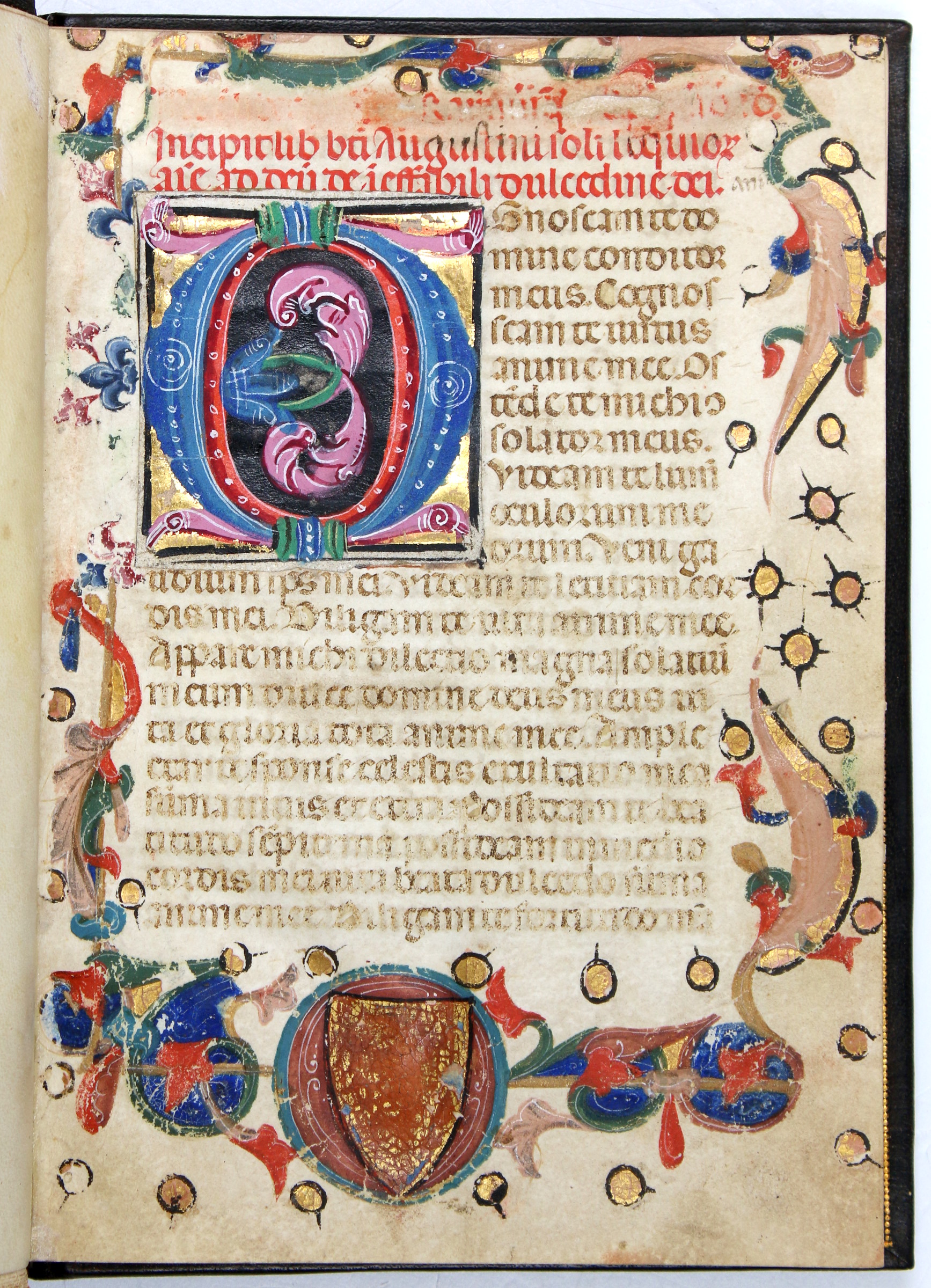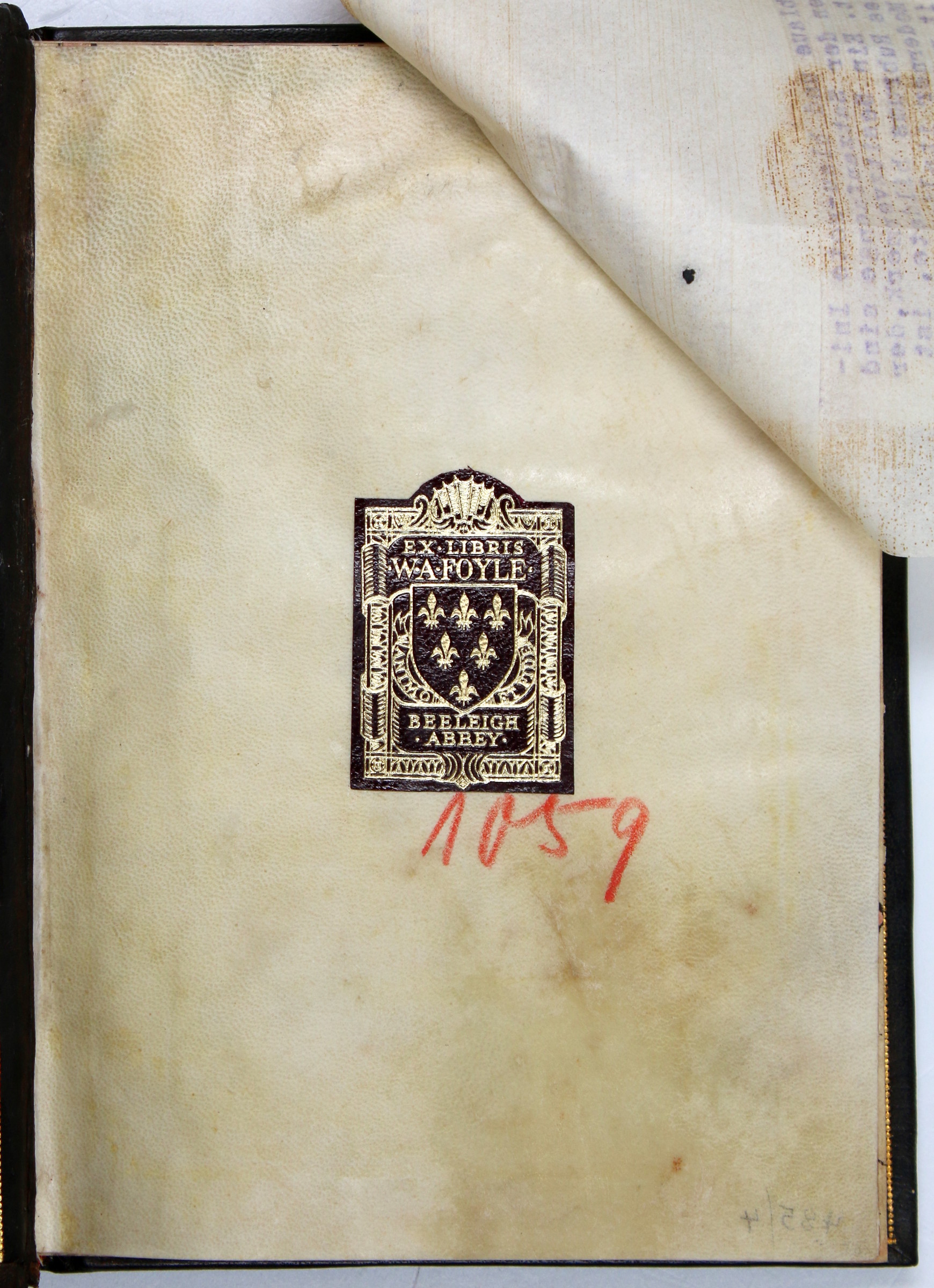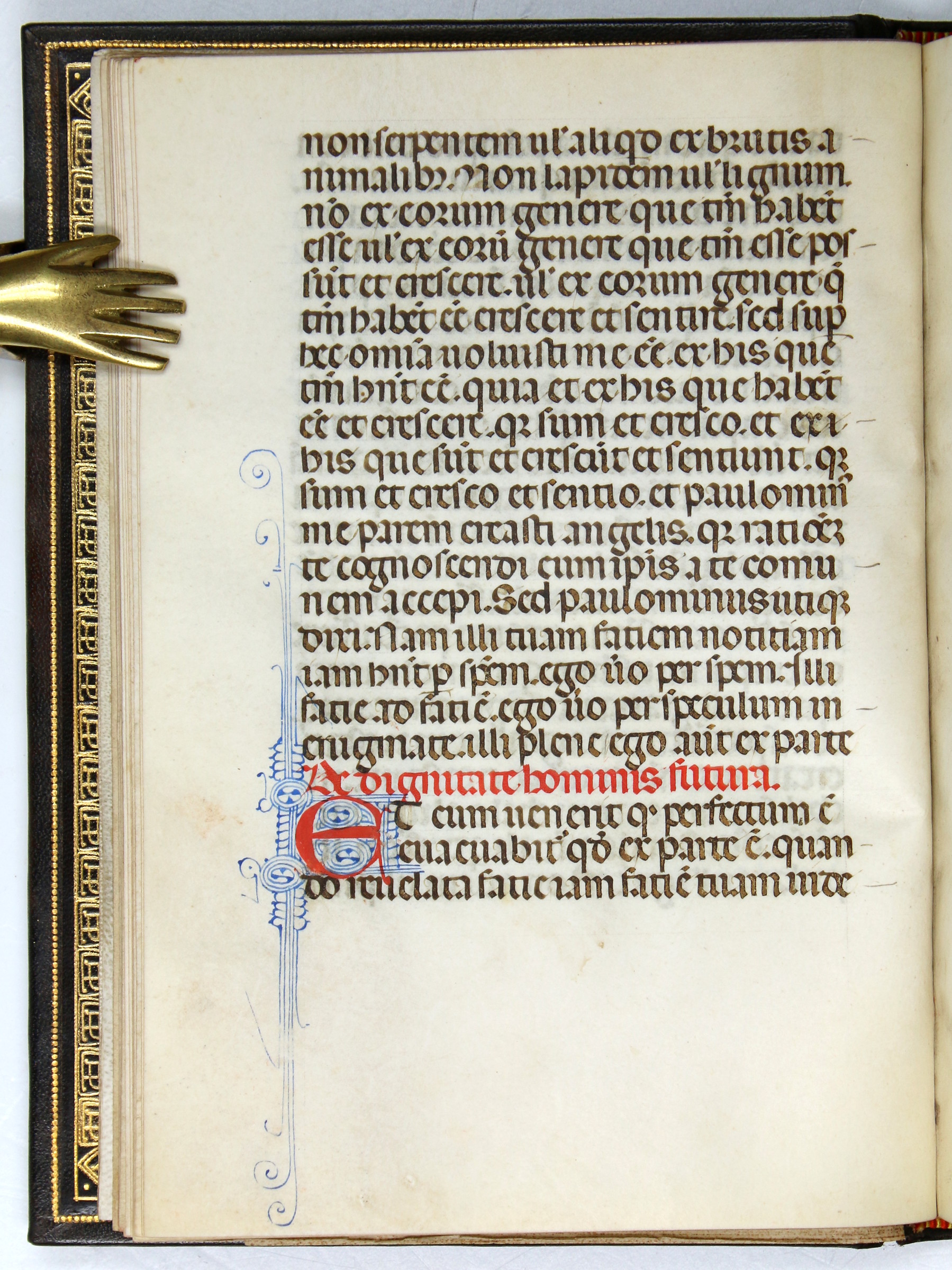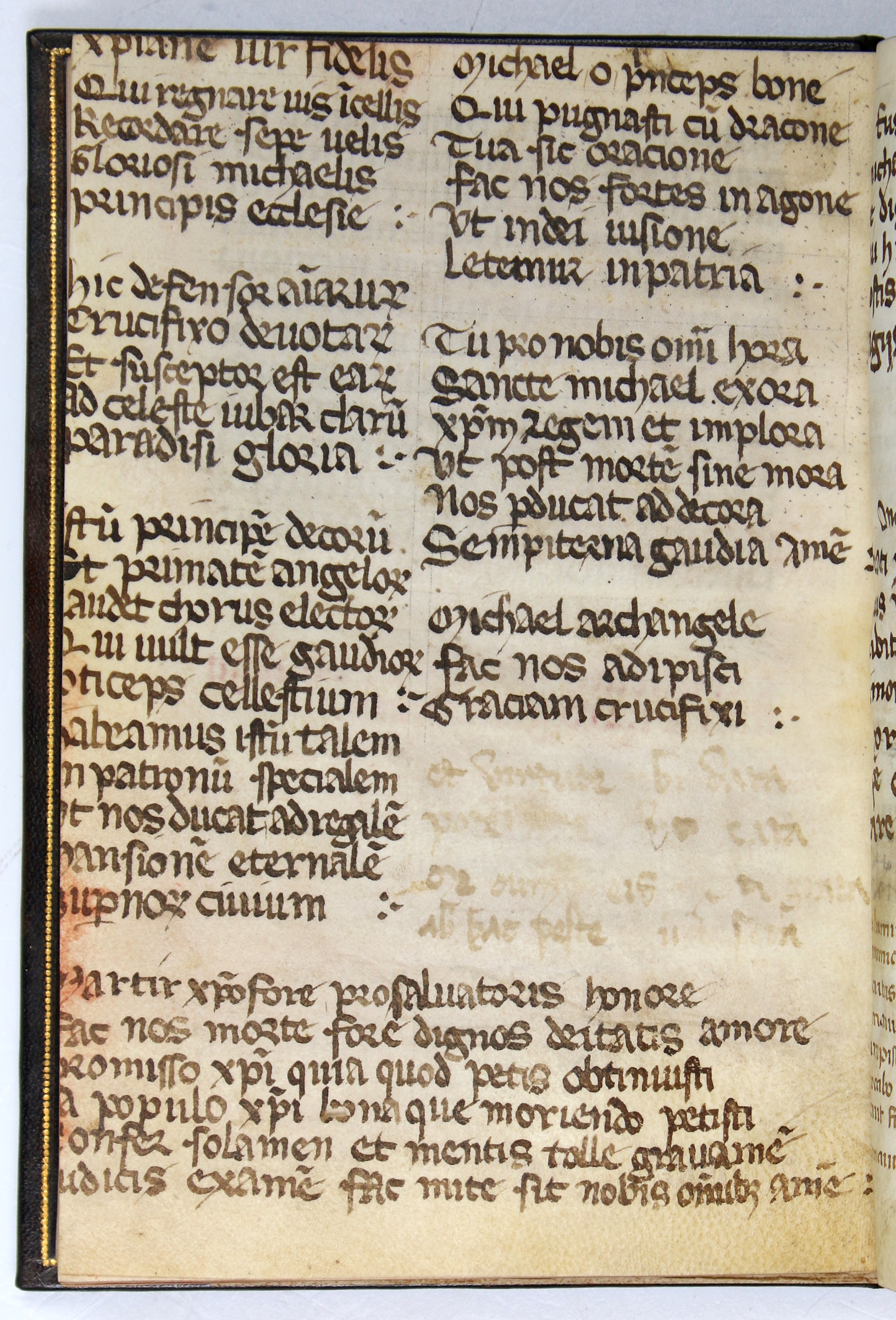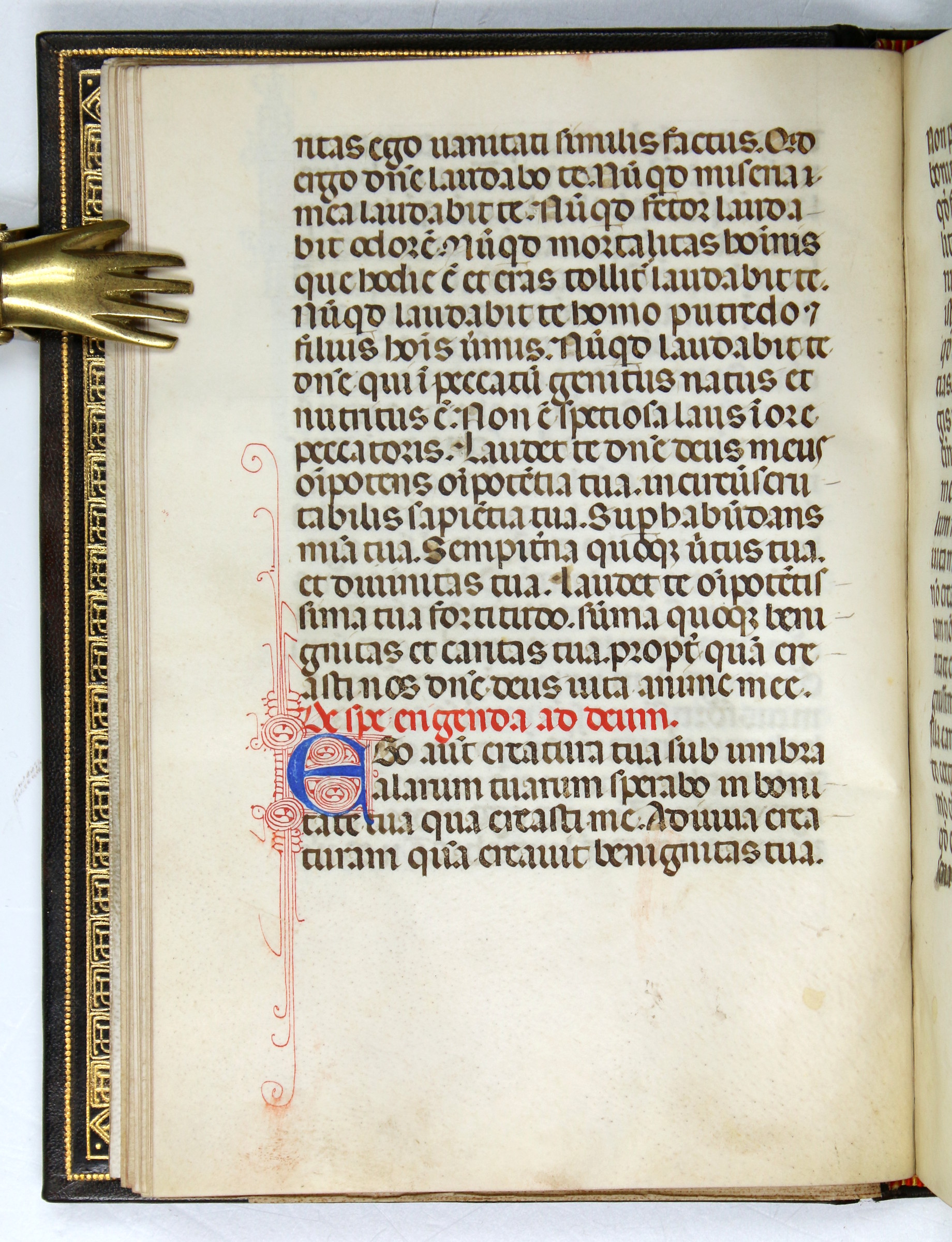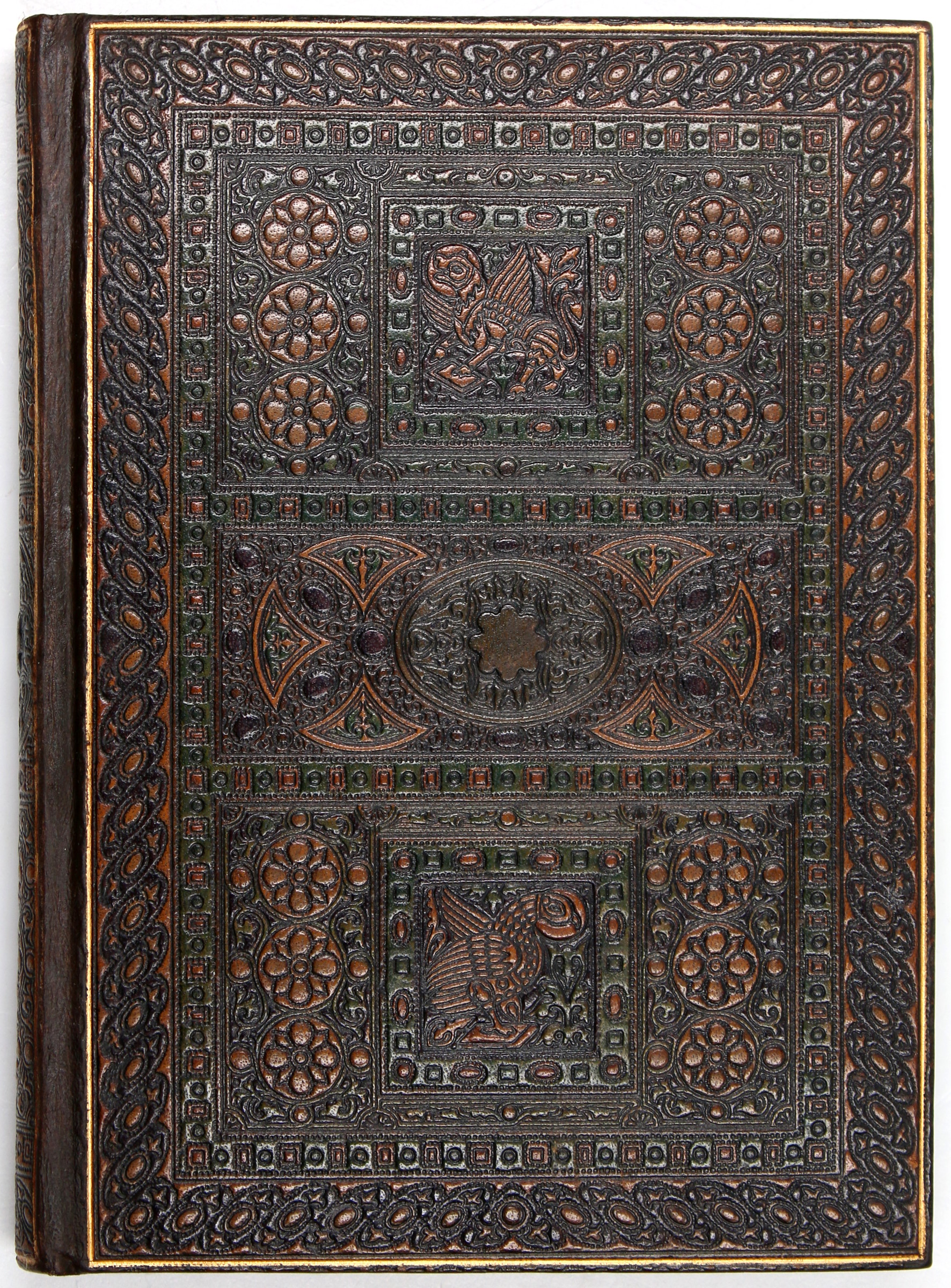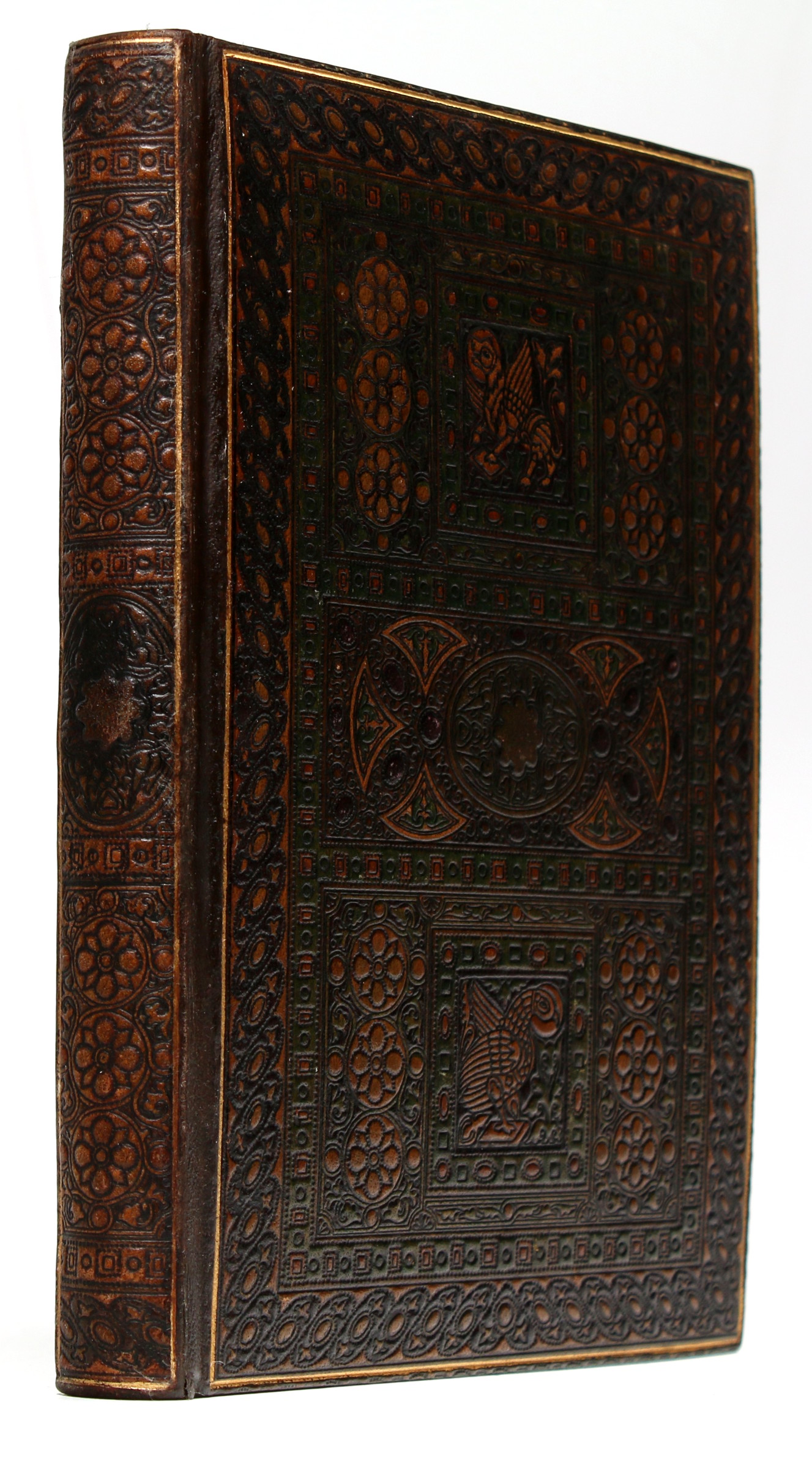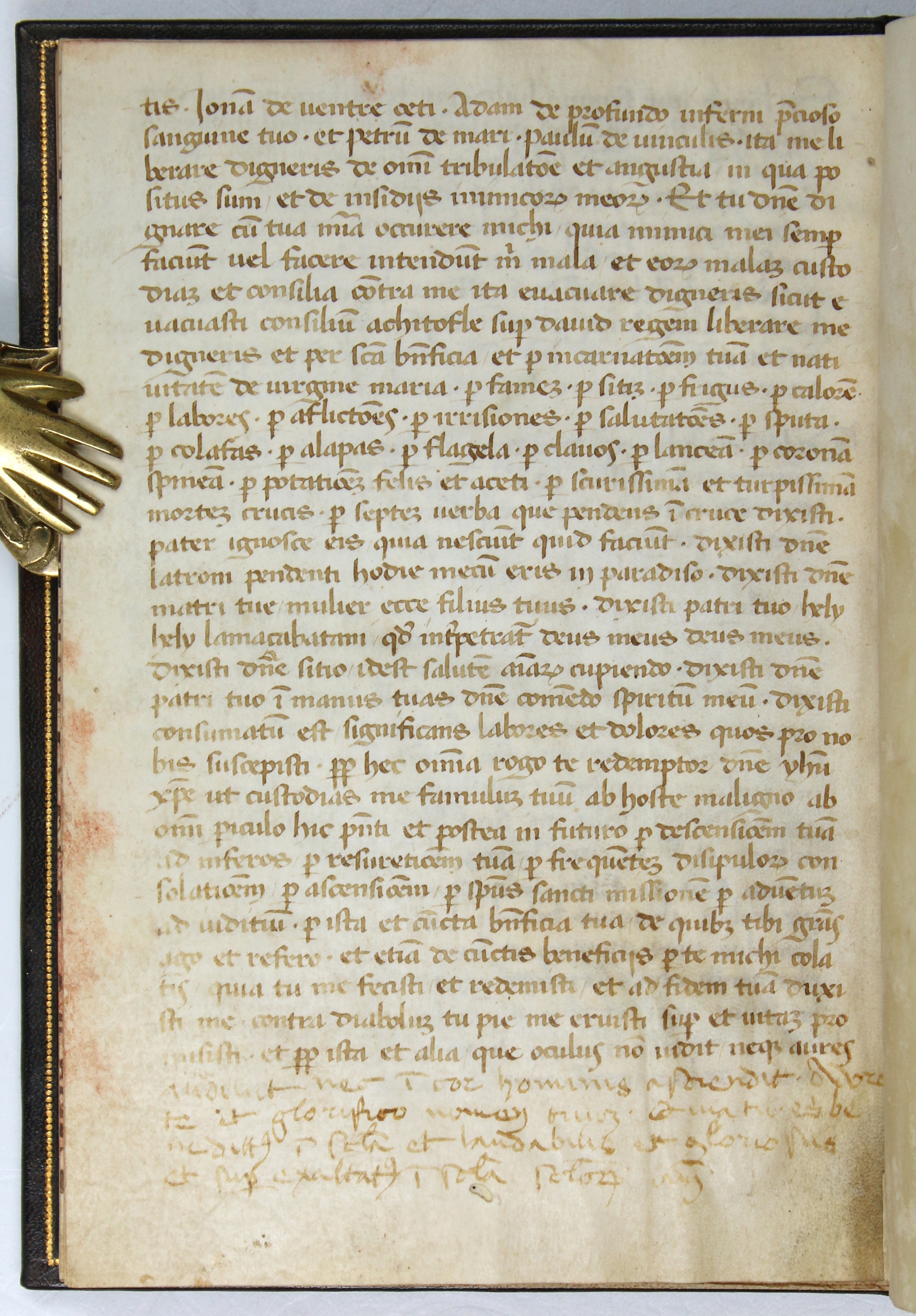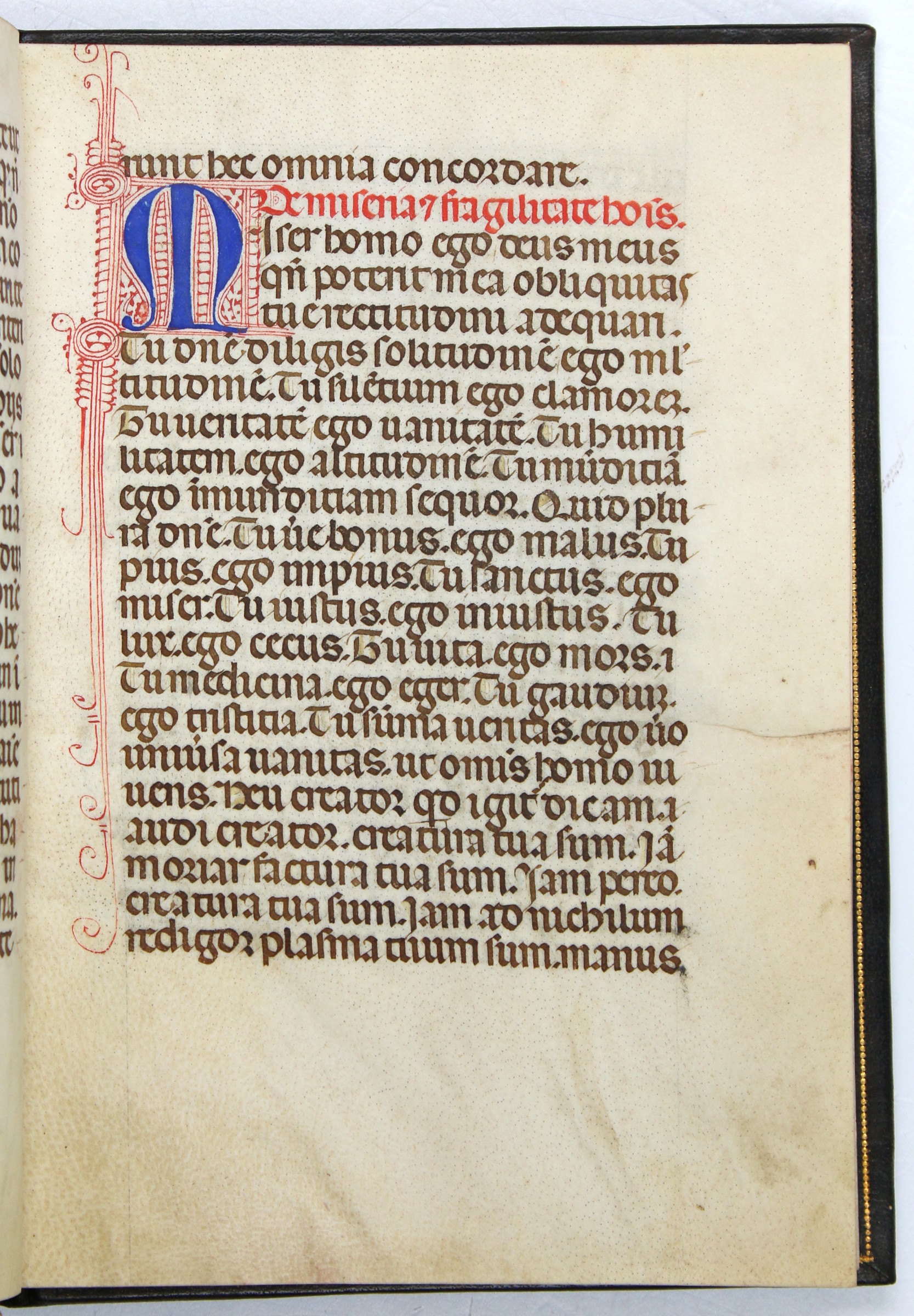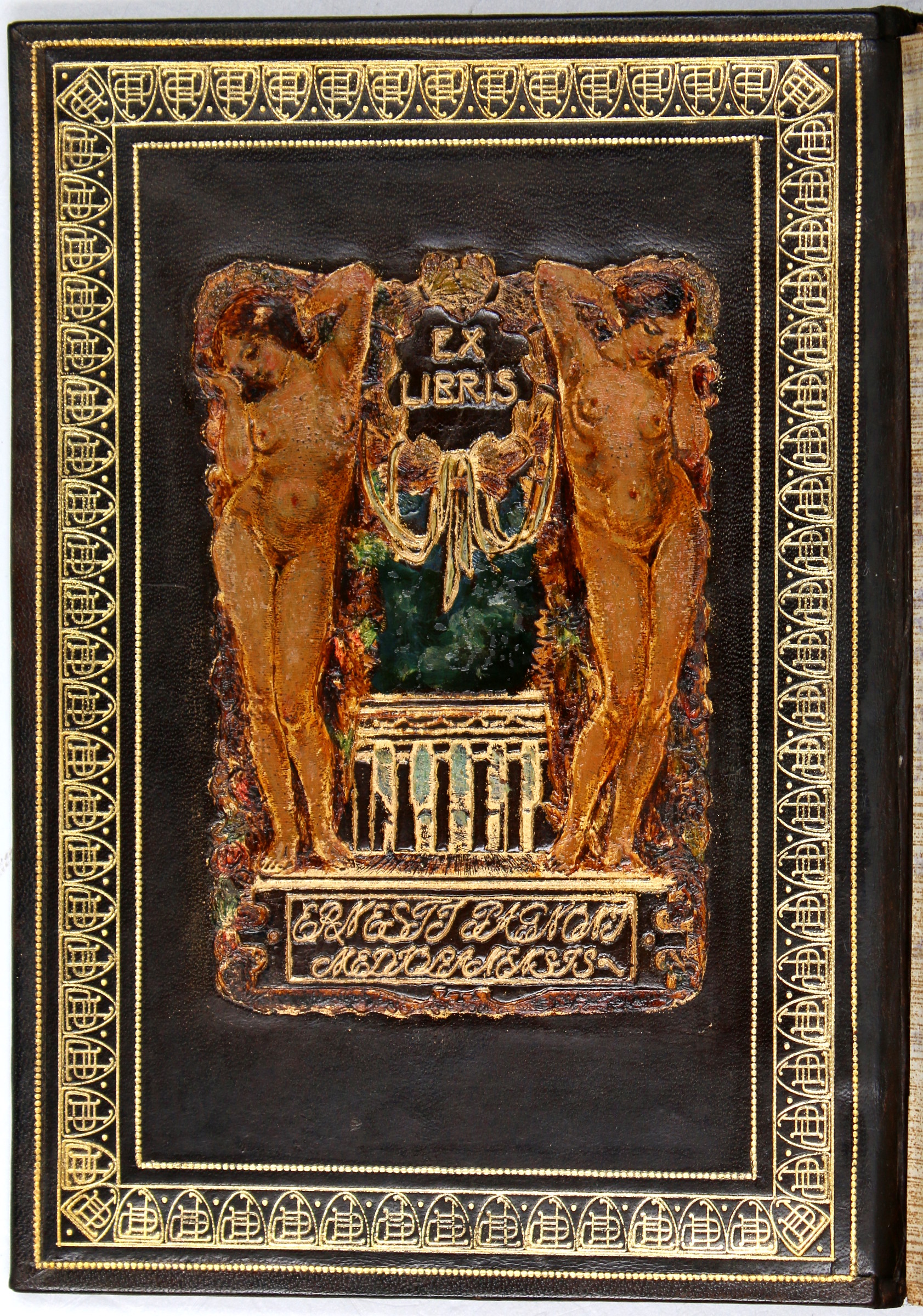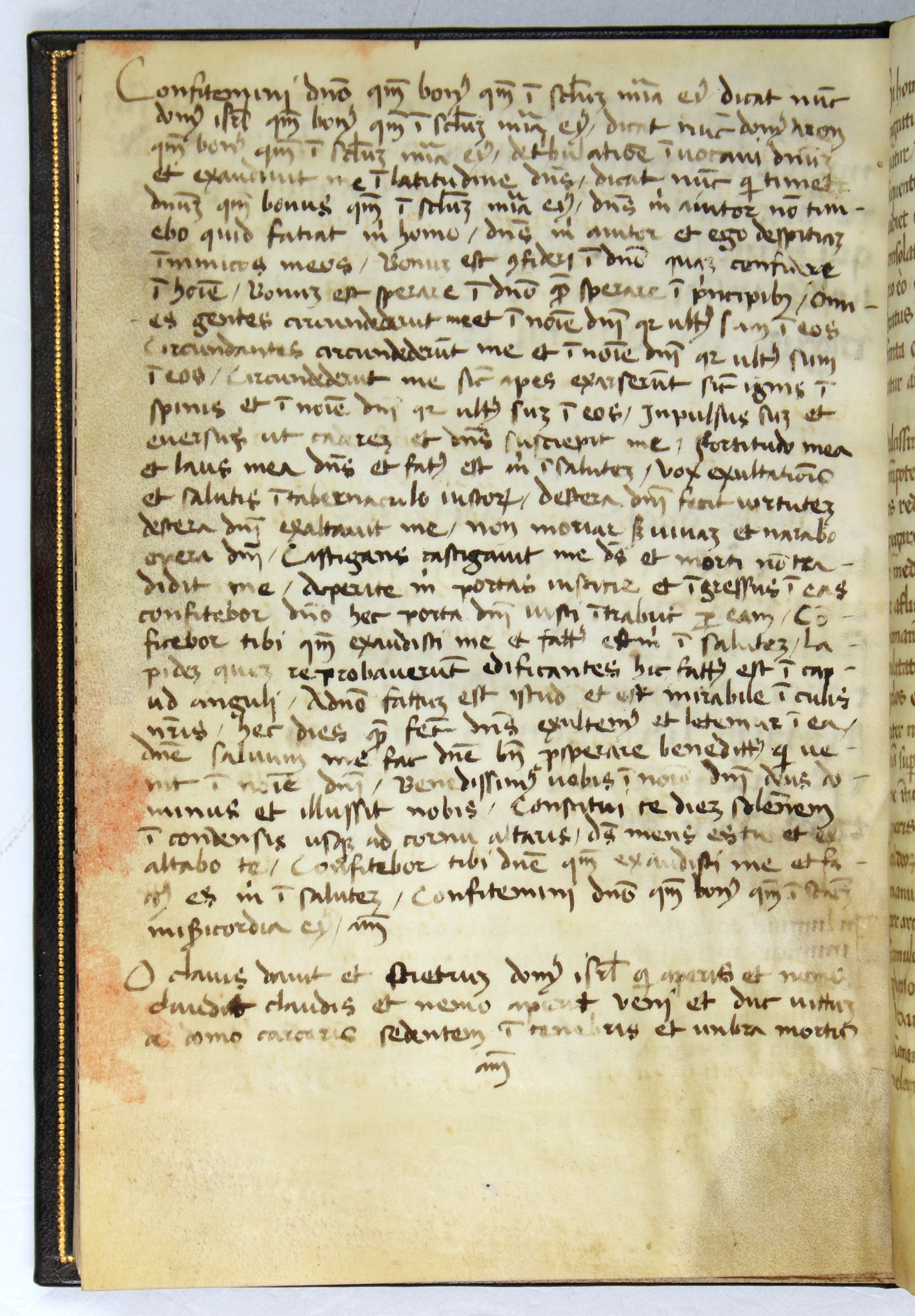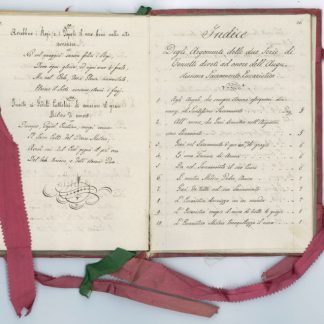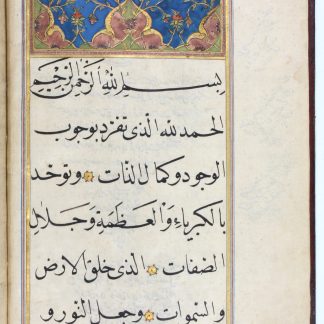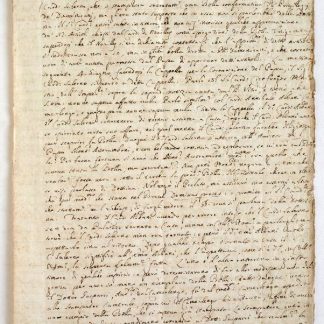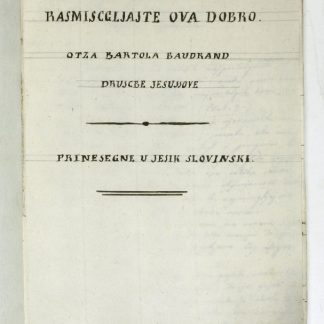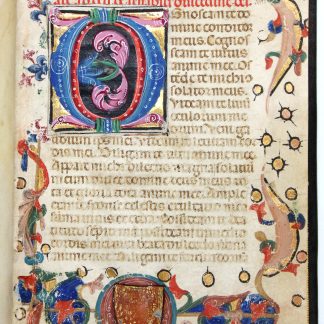Bound for the Italian engineer and industrialist Ernesto Pagnoni
Soliloquia animae ad deum.
8vo. Latin manuscript in brown and red ink on vellum, 67 ff. Italian rotunda, 22 lines. With 36 floriated initials in red and blue, large illuminated initial in gold and colours laid in to 1st leaf of text, and illuminated border decoration. Early 20th century Italian full brown morocco, elaborately stamped and coloured.
€ 65,000.00
The "Soliloquies of St Augustine", an inner dialogue on the matter of the soul. While throughout the Middle Ages and Renaissance the text was generally attributed to St Augustine of Hippo and it commonly preceded the "Confessions" in early medieval copies, the authorship is now doubted.
At the end of the volume, fol. 65v and ff. 66f. have additional texts added in several different hands, beginning with the Hymn to St Michael "Christiane vir fidelis, qui regnare vis in coelis" (Chevalier, Repertorium Hymnologicum III [1904], 24515) and the Hymn to St Christopher "martir Christoforo pro Salvatoris honore" (ibid., 29471), followed by other various prayers.
It may be possible to determine the original patron of the book: above the first rubric is an erasure that appears to begin "Iste liber" and include the name "Raimundi" (?); in the lower margin a shield of arms has been overpainted with gesso and gold, but traces of a blue ground survive, and from the back of the leaf a diagonal band (bend) can be discerned.
In the early 20th century the volume was acquired by and bound for the Italian engineer and industrialist Ernesto Pagnoni (1865-1928) of Vaprio d'Adda near Milan (see Fumagalli, Canonica d'Adda dalle origini ai giorni nostri, Zingonia, 1989). Pagnoni was active as a collector of manuscripts at least from 1908 onwards; his bookplate was designed by Sigmund Lipinsky in 1912. Many manuscripts owned by Pagnoni were bound by C. Glingler of Rome, who probably also fashioned the present, unsigned binding. Parts of his library were sold in Amsterdam by the renowned dealer R. W. P. de Vries on 2/3 December 1908. Other manuscripts once in Pagnoni's collection include the Lectura super libros sententiarum by Alfonso de Vargas y Toledo (now in Yale's, Beinecke Library, Marston MS 235), and an Ascetic miscellany, 1470-99 (now in the University of Pennsylvania, MS Codex 717).
The present manuscript was later acquired by the famous English bookseller W. A. Foyle (1885-1963), who founded Foyles bookshop in 1903, and bears his Beeleigh Abbey bookplate. Although Foyle had collected books from an early age, it was at Beeleigh Abbey in Essex, which he had purchased in 1943, that he was able to house the books properly, forming one of the largest English private libraries of the 20th century.
1) Raimondi (?), 15th century Italian nobleman (erased patronage to head of first page and his overpainted arms in the lower margin). 2) Bound in the early 20th century for Ernesto Pagnoni (1865-1928) of Milan, with his large impressed stamp on inside upper cover and his initials in shields forming a frame to both inside covers. 3) Sotheby's, 2 July 1951 ("comprising the property of the Countess Le Gualès de Mézaubran; ... Thomas Thompson, Esq. of Middlesbrough; ... S. H. Cole; ... A. W. Flay"), lot 14 (£28), to 4) William Alfred Westropp Foyle (1885-1963), British bookseller, with his burgundy morocco gilt bookplate to recto of first blank vellum leaf; a folded page of typewritten description of the manuscript in German tipped in. 5) By descent to his grandson William Richard Mervyn Christopher Foyle (1943-2022), aviator and bookseller.
8vo (133 x 186 mm). Latin manuscript in brown and red ink on vellum, 67 leaves (plus 2 vellum endpapers at both front and rear), thus complete. Collation: 1-6[10], 7[10-3] (last 3 cancelled). Written in an Italian rotunda script of the late 14th or early 15th century, 22 lines per extensum. With 36 two-line (the first being four-line) floriated initials in alternate red and blue, and blue and red, a ten-line illuminated letter "O" in gold and colours laid in (from a different manuscript) to first leaf of text, and with illuminated border decoration of foliate motifs, stars and a shield at foot. Early 20th century Italian full brown morocco with elaborate and rich impressed decoration in green, dark brown and light brown.
Cf. Migne, PL 40, 863-898.

